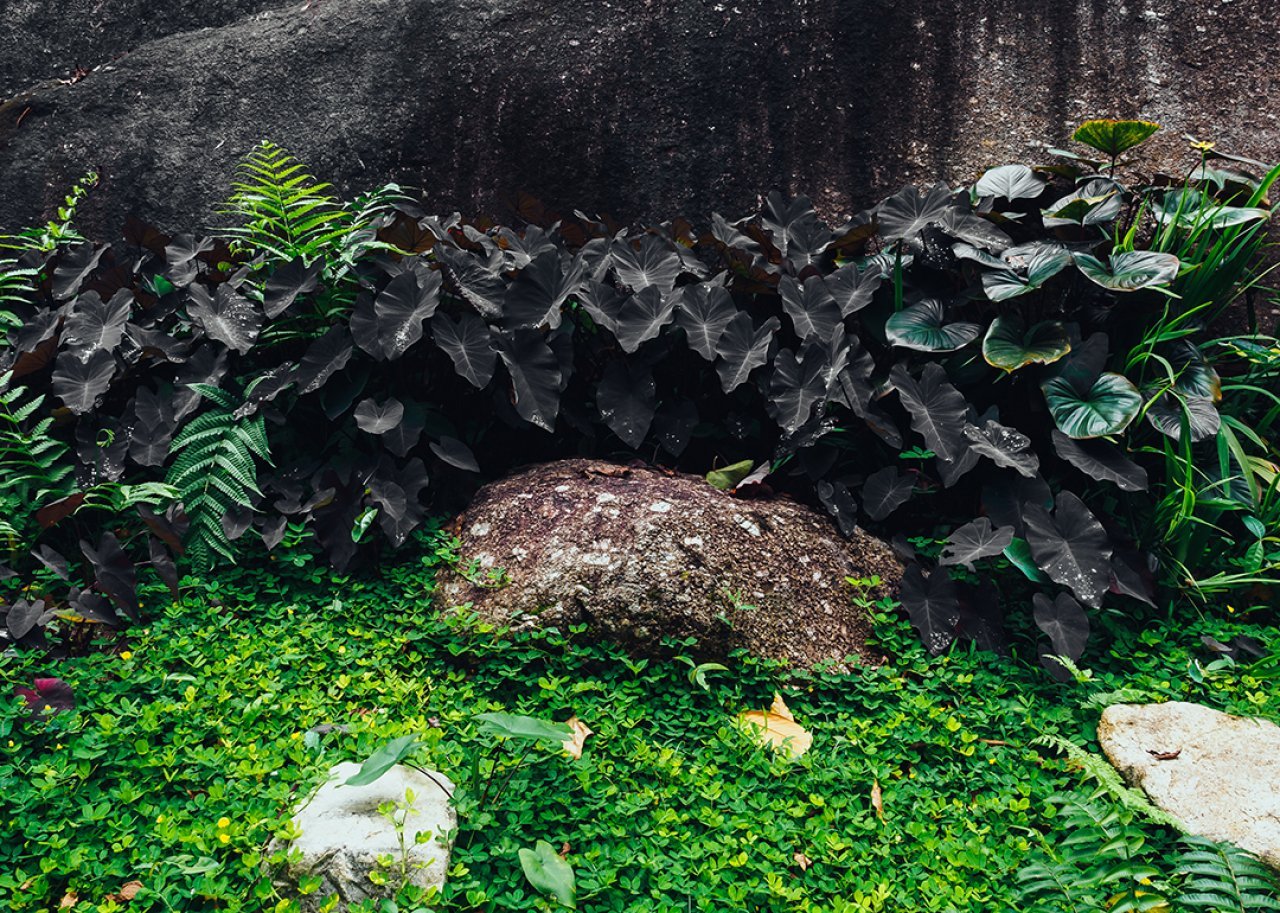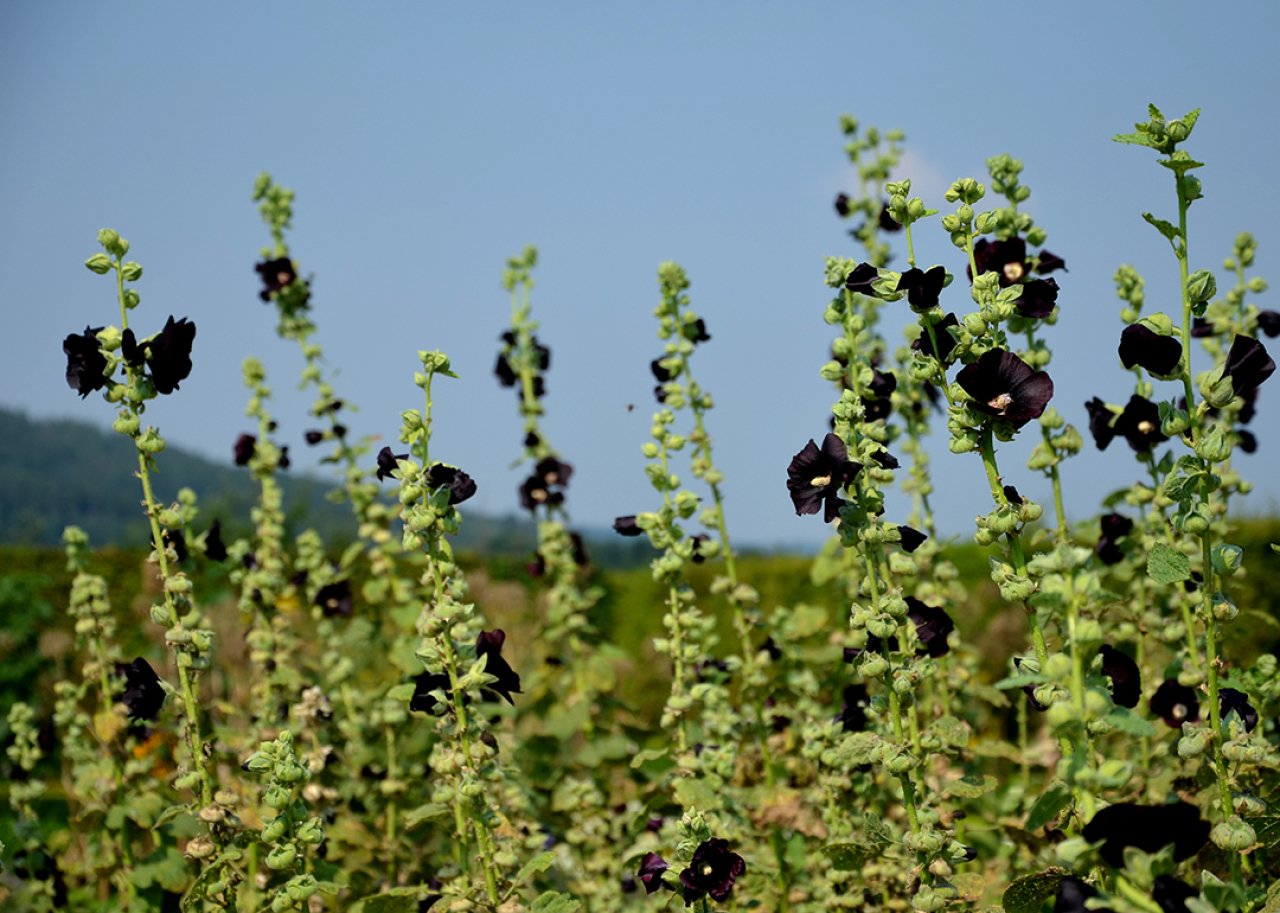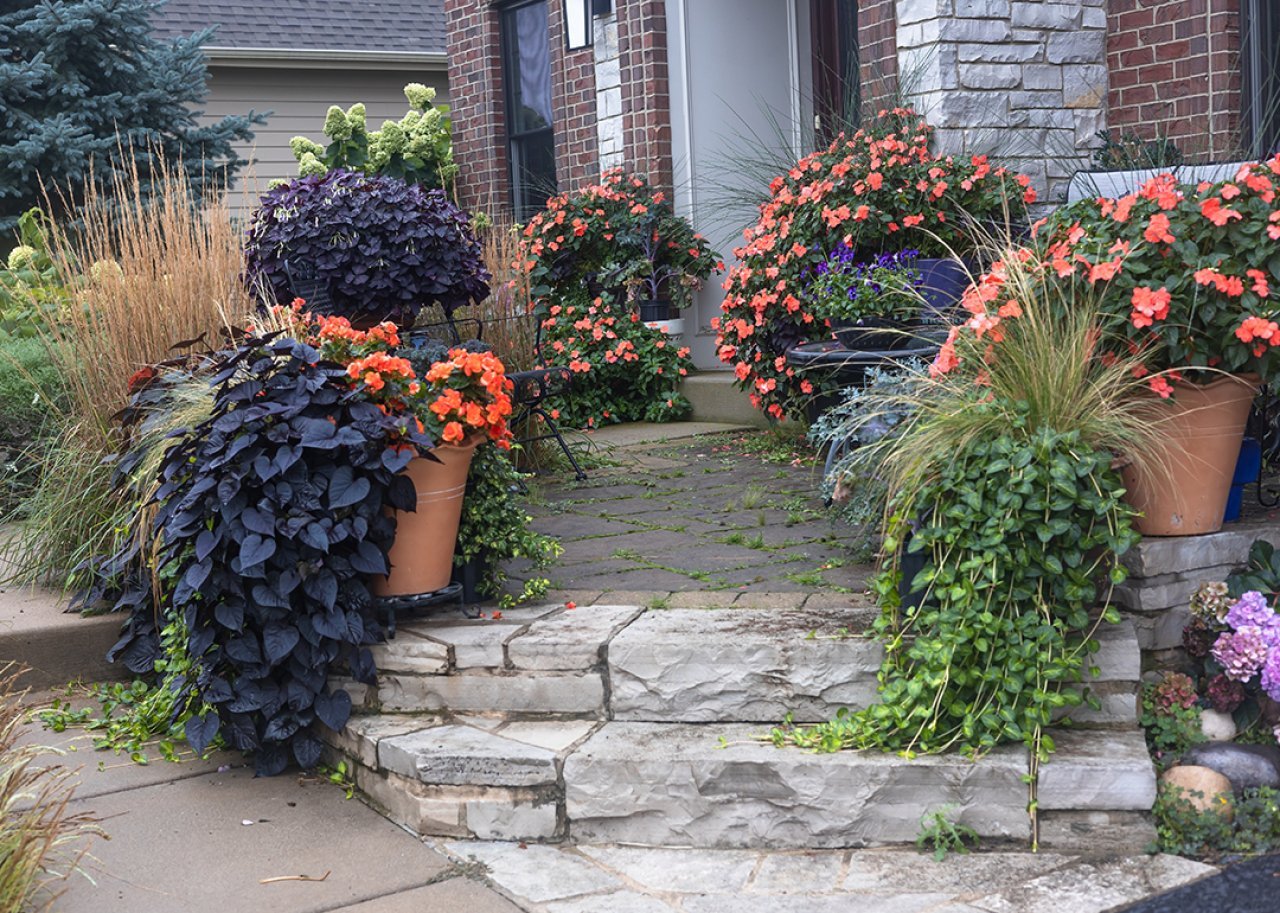Keep your yard creepy year-round with a goth garden
Lifestyle

Audio By Carbonatix
9:30 AM on Monday, October 20
By Teresa Joaquim for LawnStarter, Stacker
Keep your yard creepy year-round with a goth garden
For some, spooky season is not just on Halloween, but is celebrated year-round — and what better way to bring death to life than in a garden?
Instead of temporary yard decorations, Chloe Hurst, a goth gardener and TikTok star, has created an elaborate garden at her Carleton Place, Ontario, home that would charm any gothic devotee. Headstone plant markers, a tinkling crystal chandelier, and a weeping angel statue create a mournful yet eerie atmosphere amongst foliage and flowers of every hue of black.
An extension of a decades-old musical genre, goth subculture has recently extended into other spheres of life. Fashion, interior design, and more recently, even gardens, have become avenues of personal expression for goth enthusiasts, many of whom have taken to social media to share their #gothlife with others.
So dust off your mourning veil, throw your requiem of choice on the Victrola, and grab a candelabra as LawnStarter takes you out of the twilight of your dark heart and into the soil of a goth garden.

What Is a Goth Garden?
A goth garden creates a gloomy atmosphere through its plants, ambiance, and hardscaping elements. For Hurst, creator of The Goth Garden on Instagram, goth gardens “are more about the overall atmosphere — something moody, intriguing, and a little dramatic.”
Sarah Browning, community forester for the Nebraska Statewide Arboretum and Nebraska Forest Service, says, in contrast to other gardening styles, “Goth gardens are more enclosed, either with hardscaping (fences or walls) or by plants. Compared to the open, bright cottage garden, a goth garden is moody and ‘secret’, often with trees providing shade and darkness.”
Why Are Goth Gardens Gaining in Popularity?
The modern goth movement was born as an urban subculture based on the post-punk musical scene. In the late 1970s, bands like The Cure and Bauhaus gained popularity, bringing with them dark makeup and melancholic lyrics.
But hallmarks of today’s goth aesthetic — horror, romance, and the supernatural — have their roots in earlier artistic movements. Medieval architecture (think pointed arches and stained glass) and 19th-century gothic literature (often set in dramatic, dark, isolated locales) strongly influence 21st-century goth culture and artistic expression.
More recently, Netflix’s “Wednesday” series, Lady Gaga’s new album, and social media trends have marked a revival of goth aesthetics in pop culture. Platforms like TikTok and Instagram help the community to spread its lifestyle and inspire goths everywhere to express themselves.
With that, goth gardening showed up as a trend that encourages goths to extend their style, even outdoors. Goth gardens have become a way to create an immersive universe in your own home. As Hurst says of her goth garden, “With every addition, the space transforms, becoming more hauntingly beautiful and immersive.”
What Makes a Garden Goth?

You don’t have to decapitate your roses Morticia-style to achieve a goth garden. Instead, invest in creating ambiance with decorative pieces, and choose plants with dark colors or plants that bloom in shades of red, purple, or even white (for a stark contrast against the dark foliage).
Diane Blazek, executive director of the National Garden Bureau, says that non-living elements help make a garden “goth” (how appropriate). Goth gardens usually include hardscaping (like statuary), she says, and the actual layout of the garden also can add the goth feel when you plan for a hidden-away garden mood.
How to Create Your Own Goth Garden
Each goth garden, like each goth gardener, is unique. Start with a theme for inspiration. Next, draw out a loose design, complete with plants, hardscape features, special ornamental touches, and spooky lighting to bring life to your newly hallowed space.
Choose a Theme
Browning emphasizes the importance of studying before getting your hands dirty: “Learn more about the design styles used to create a goth garden.” She advises gardeners to gather pictures for inspiration and to choose the features they want to add to their garden before they begin.
Some of the most popular themes for goth gardens are:
Graveyard: What could be more gothic than a graveyard? The Addams family would agree. With a graveyard as a backyard, Wednesday herself grew up surrounded by aging headstones.
You can recreate this atmosphere with moss-covered angel sculptures, or do as Hurst does and add small gravestone plaques with the names of each of your plants.
Victorian: Victorian goth gardens evoke romance, but also melancholy and a sense of nostalgia. Invest in crimson-colored plants and go for vintage and thrifted decorative treasures such as old birdbaths. Victorian-style gardens also incorporate ironwork: iron doors, window grilles, or gates.
Ivy: There’s nothing quite like an ivy-covered garden. It evokes an instant feeling of old, untouched gloom, like the nostalgic atmosphere of gothic novels. Ivy creeping over walls, windows, or other stone accents offers an interesting textural contrast to the hardscaping elements of a garden.
Moon garden: The night is the inspiration and preferred time for many goths. The quiet atmosphere, the silence, and sounds of nocturnal creatures, and of course, the moon — these are all elements valued in goth culture.
Arrange plants with light-colored blooms that reflect the moonlight and night-blooming plants around a gothic gazebo or trellis to create the perfect moon garden.
Rose garden: Nothing says gothic romance quite like the classic red roses. With blood-red blooms whose beauty contrasts against the rough thorns, roses are a call for drama. Have fun with different colors — black, white, or baby pink roses are great additions. Or maybe arrange them in a thorn bouquet just like Morticia’s.
Poison garden: This one might be a little eccentric and require some extra caution. Poison gardens often display toxic plant species such as foxglove. Add carnivorous plants to the mix for a true homage to Baudelaire’s book title, “Flowers of Evil.” Just remember, this might not be a good idea if you have small children or pets in your home.
Crypt garden: For those searching for a hideout from the world, a crypt-inspired design might be the option for you. Crypts are all about aged stones, decorative skulls, and other church-like features such as arched windows or stained glass (which provides a nice ambiance during moonlit nights).
Choose shade-loving plants, such as ‘Wicked Witch’ coleus and ‘Eclipse’ hydrangea, that thrive in secluded, partially lit spaces.
Decide on the Design and Layout
After you decide on your theme, it’s time to draw the first draft. Plan your design and the garden layout before adding any elements. Remember that goth gardens often have a feel of secrecy or of a hidden place.

Blazek suggests using the design and layout of the garden itself to enhance the goth atmosphere: “twisting paths, pocket or ‘secret’ gardens set apart by walls and arches, or even a maze built of hedges.”
For Browning, the first step is to “assess the current garden layout and, if necessary, start to create a ‘backbone’ structure with evergreens or shrubs to create those hidden, tucked-away nooks.”
Here’s where the real fun starts. Choose plants with dark foliage or high-contrast colors and play with textures. For Hurst, some of the essential plants for goth gardens are:
- Dark sedum cultivars: ‘Night Embers’, ‘Back in Black’, ‘Dark Magic’, and ‘Plum Dazzled’ are essentials in her garden (and are pollinator- and bee-friendly). Hurst says they’re fantastic for layering in between taller and smaller plants.
- ‘Black Mamba’ petunias: A staple in her garden, these were the first flowers she added to create her goth garden. A true black flower with a velvety touch, ‘Black Mamba’ petunias add elegance and a real goth essence.
- Ninebark: ‘The Panther’, ‘Little Devil’, and ‘Fireside’ varieties are especially interesting for a goth garden.
- Hibiscus: ‘Midnight Marvel’ and ‘Cookies and Cream’ varieties are perfect for those in search of a dramatic bloom and high contrast. “Both have nearly black foliage paired with dinner plate-sized flowers that either look like Dracula’s cape or full moon light,” says Hurst.
Felicia Feaster, author of the book “The Goth Garden: The Mystery, Beauty, and Lore of Dark Gardening,” has two interesting suggestions for those just starting out with their goth project: rosemary and English lavender. For her, their silvery tones stand out against other plants’ dark foliage. Additionally, these two plants have been used historically to embalm, heal, and for their aromatic properties.
Add Hardscaping Features
Once you have the living “backbone” in place, next build out the structure of your goth garden with your hardscaping elements. Blazek suggests:
- Install gates, frames, and stone arches: Arched structures are a classic in gothic architecture. Iron gates and frames can help create different areas inside your garden or separate your garden from other areas of your yard, intensifying the sense of mystery and secrecy that goth gardens usually go for.
- Create a path: Use stones or wood planks to create pathways in your garden. Maybe they can lead to nowhere, or maybe they can lead to an aged statue or a secret nook with a bench where you can enjoy a book.
- Add walls: Along with gates, frames, and arches, use stone or brick walls to create separate areas. You can let ivy creep over the walls or create a sense of antiqueness by spreading a mix of yogurt and moss over them, as this will invite moss to grow over the structure.
- Use other vertical features: Browning recommends being creative with vertical features: “An arbor covered with vines or a gazebo can also help create the goth feel.”
Opt for Ornamental Features
Use ornamental features to bring your theme to life. Hurst says she loves “layering plants with pieces like urns, statues, or unexpected thrifted treasures.”
- Add statues: Replace traditional garden gnomes with gargoyles, skulls, or angel figures, or take inspiration from your favorite gothic novels or authors: Edgar Allan Poe, Charlotte Brontë, and Mary Shelley. For example, why not add a raven statue as the centerpiece for an annual plein air reading of “The Raven”? “Nevermore!”
- Incorporate a pond or birdbath: Water elements can elevate the romantic and calm feel in your garden. They can also attract birds to your garden, adding that whimsical touch.
- Decorate with urns: Decorative urns and plant pots can serve as focal points, adding aesthetic value to your garden.
- Vintage or antique pieces: A rusted old lantern, moss-covered stones, old furniture, and antique pieces can bring a sense of history to your garden.
Feaster advises turning your garden Dracula-friendly: “Invite pollinators into your garden by leaving a certain amount of leaf litter and dried and dead plants (also very goth!) in your garden,” she says. “There are a host of nocturnal pollinators that come out at night, like hawk moths, beetles, bioluminescent fireflies, and bats.”
Wildlife tip: Fake cobwebs are a true danger to bats and other wildlife species that are crucial to the environment. Instead, let nature take its course and add dense foliage to your garden, where real spiders will build their webs (and help you catch mosquitoes and all sorts of annoying critters).
Experiment With Lighting
Goth gardens typically have a moody and gloomy feeling that darker, shadowy places bring. But that doesn’t mean you can’t play with light. Use windows to create focal points in your garden. You can also add Victorian or gothic-framed arched windows and stained glass for a church-like atmosphere.
The Future of Goth Gardening
Goth gardens are here to stay, but bringing life to a dead or neglected patch of earth isn’t for the faint-hearted soul. Just in time for Halloween, follow the tips above to create your own goth garden with your own unique goth style.
This story was produced by LawnStarter and reviewed and distributed by Stacker.

























